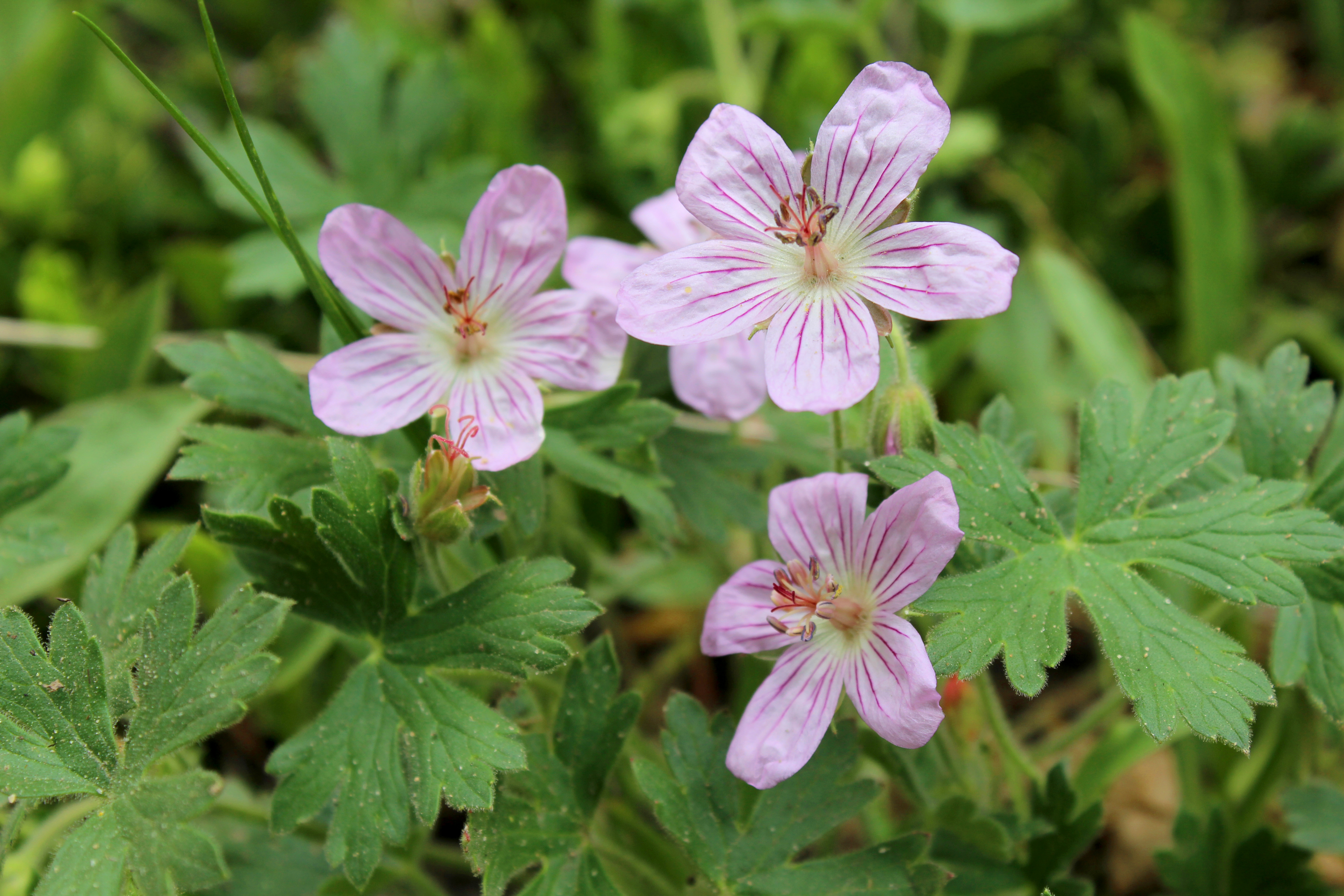Richardson's geranium
(Geranium richardsonii)

Description
Geranium richardsonii is a species of geranium known by the common name Richardson's geranium. It is native to western North America from Alaska to New Mexico, where it can be found in a number of habitats, especially mountains and forests. This is a perennial herb varying in maximum height from 20 to 80 centimeters. The plant grows from a tough, woody taproot and older plants develop rhizomes. The leaves are up to 15 centimeters wide and are divided into generally five segments, each segment subdivided into small rounded or pointed lobes. The flower has five pointed sepals beneath five rounded petals, each one to two centimeters long. The petals are white to purple with darker purple veining. The fruit has a small body with a straight style up to 2.5 centimeters long (see image at left). Geranium is a genus of 422 species of annual, biennial, and perennial plants that are commonly known as geraniums or cranesbills. They are found throughout the temperate regions of the world and the mountains of the tropics, but mostly in the eastern part of the Mediterranean region. The palmately cleft leaves are broadly circular in form. The flowers have five petals and are coloured white, pink, purple or blue, often with distinctive veining. Geraniums will grow in any soil as long as it is not waterlogged. Propagation is by semiripe cuttings in summer, by seed, or by division in autumn or spring. Geraniums are eaten by the larvae of some Lepidoptera species including brown-tail, ghost moth, and mouse moth. At least several species of Geranium are gynodioecious. The species Geranium viscosissimum (sticky geranium) is considered to be protocarnivorous. The flowers are typically five-petaled and white to purple. The leaves are palmate divided into narrow, pointed segments. The fruit capsule consists of five cells joined to a column produced from the centre of the flower. The cells form lobes which eventually separate, each containing one seed. When the fruit is ripe, the beak-like stigma springs open and casts the seeds some distance, dispersing the seeds. Confusingly, "geranium" is also the common name of members of the genus Pelargonium, which are also in the family Geraniaceae and are widely grown as horticultural bedding plants. Linnaeus originally included all the species in one genus, Geranium, but they were later separated into two genera by Charles L’Héritier in 1789.
Taxonomic tree:







